Custard Notes in Flavors
Diacetyl, Acetoin, Acetyl Propionyl, and Butanoic Acid
Any time you have a flavor that has a vanilla, custardy, or buttery note to it, it will have one or all of the "custard note" family: acetyl propionyl, butanoic acid, and acetoin. Most, but not all, flavor houses have eliminated diacetyl from all formulations. No flavor sold by The Flavor Apprentice is made with diacetyl. Each custard note has a particular flavor, and as flavor is subjective, you will find that you prefer some more than others.
The unique flavors of diacetyl, butanoic acid, acetyl propionyl, and acetoin are rather obvious, and once a person learns how to recognize them, they are easy to spot. Just like once you know the flavor of cinnamon, you can usually tell if a cocoa recipe has cinnamon in it just by taste! By definition, a vanilla custard flavor, no matter who makes it, will have some combination of acetoin, butanoic acid, and acetylpropionyl (or diacetyl) in it. Just like it would be hard to bake a cinnamon roll with no cinnamon, it would be nearly impossible to create a vanilla custard, ice cream, caramel, or bakery flavor without custard/butter flavor components. Some fruits (and therefore fruit flavors) even include custard/butter notes!
If you would like to learn a bit how to tell the differences, you can compare our Vanilla Custard (which has both acetoin and acetylpropionyl), with our Vanilla Bean Ice Cream (which is nearly identical, but uses only acetylpropionyl). You may also find it interesting to compare Vanilla Bean Gelato to these, which is again nearly identical, but uses butanoic acid instead of any diketones. By tasting these three flavors, you can begin to get a sense of the differences between (and your preferences for) acetyl propionyl, butanoic acid, and acetoin.

Acetoin (3-Hydroxybutanone)
– Sweet, buttery, creamy, dairy, milky, fatty
Not to be confused with the solvent acetone, acetoin occurs naturally in apples, butter, yogurt, asparagus, blackcurrants, blackberries, wheat, broccoli, brussels sprouts, cantaloupes and maple syrup. Acetoin is often used with diacetyl to make artificial butter flavoring as they both occur naturally in butter and lend it the characteristic flavor.
Acetoin can, in production, dehydrogenate to form diacetyl in trace amounts. It is highly unlikely for this reaction to happen after flavor blending. For customers wishing to avoid even trace amounts of diacetyl, this means that any flavor that contains acetoin can potentially also contain trace diacetyl, even though diacetyl was not an intentionally added component of the formula. If you would like to avoid acetoin, you may wish to shop our diketone-free (DX) line of flavors. You may also check the Spec Sheets & Components List entry for an individual flavor to confirm its acetoin content. To see which flavors feature acetoin, please search our Spec Sheets & Components List for CAS # 513-86-0.
 Acetylpropionyl (2,3-Pentanedione) -
Acetylpropionyl (2,3-Pentanedione) -
Toasted, nutty, buttery, creamy, cheesy, and caramellic with marshmallow and molasses nuances
Acetylpropionyl is a buttery diketone with similar organoleptic properties to acetoin and diacetyl, which can also occur in dairy, fruit, and honey products. Though it may look very similar to diacetyl, the extra carbon makes it quite distinct as it is a very difficult bond to break. As such, it does not carry the same risk as acetoin of becoming diacetyl.
The National Institute of Occupational Safety and Health have found significant respiratory damage and genetic changes in brain tissue in animal studies.
If you would like to avoid acetylpropionyl, you may wish to shop our diketone-free (DX) line of flavors. You may also check the Spec Sheets & Components List entry for an individual flavor to confirm its acetylpropionyl content. To see which flavors feature acetylpropionyl, please search our Spec Sheets & Components List for CAS # 600-14-6.
 Butanoic Acid (butyric acid) -
Butanoic Acid (butyric acid) -
Sharp, acidic/sour, dairy-like, cheesy, creamy, buttery with a fruity nuance
Butanoic acid is a fatty acid which makes up 3-4% of butter in its triglyceride form. As such, it can be found in milk, especially buffalo, sheep, and goat milk, lending the characteristic tang of each. It is also in kombucha, butter, and cheeses (especially parmesan).
Butanoic acid is not a diketone, and as such is often used as a replacement butter/custard note in flavors which have had diketones removed from their formula. While it is used at low levels to accentuate a butter note, it is not commonly used at concentrations as high as acetoin or acetylpropionyl.
If overdone it can lend a rather unpleasant aftertaste to a flavor, as butanoic acid is also one of the main scent components of vomit. Butanoic acid can also cause sore throat, coughing, and irritation when inhaled, though has not been brought to light as particularly hazardous, unlike diketones.
To see which flavors feature butanoic acid, please search our Spec Sheets & Components List for CAS # 107-92-6.
 Diacetyl (butanedione, 2,3-diketobutane) -
Diacetyl (butanedione, 2,3-diketobutane) -
Sweet, creamy, buttery, milky, with a caramellic toffee nuance
Diacetyl is a natural byproduct of fermentation, and occurs in alcoholic beverages as well as cultured dairy products (such as cultured cream, cultured/European-style butter, yogurt, or sour milk). It can also be found in some fruits, especially stone fruits such as peach, nectarine, and plum, and thus is in some natural fruit extracts.
Diacetyl is often used with acetoin to make artificial butter flavoring as they both occur naturally in butter and lend it the characteristic flavor, and are entirely safe to consume in food. It has gained some press in the past decade as workers in several factories that manufacture butter flavoring have been diagnosed with bronchiolitis obliterans, a rare and serious lung disease.
The United States National Institute for Occupational Safety and Health has suggested diacetyl, when used in artificial butter flavoring (as used in many consumer foods), may be hazardous when heated and inhaled over a long period, and may induce bronchiolitis obliterans as well as beta-amyloid aggregation (which is linked to Alzheimer’s disease).
In light of these concerns, diacetyl has been removed from many products that use artificial flavoring, and is not added to any flavors sold by The Flavor Apprentice.
Acetoin can, in production, dehydrogenate to form diacetyl in trace amounts. Because of the many health concerns under investigation in relation to diacetyl, for the safety of our employees and customers, we have tested our flavors for these trace amounts by GCMS, so that any who wish to completely avoid diacetyl may better do so. To access test results, please visit our Spec Sheets & Components List and click on the product link of the flavor you are concerned about.
